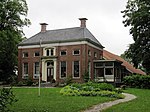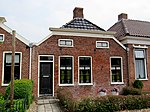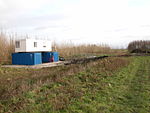Museum de Oude Wolden

Museum de Oude Wolden (Dutch pronunciation: [myˈzeːjʏm də ˌʔʌudə ˈʋɔldə(n)]; English: Museum The Old Wolds), abbreviated as MOW, is a regional museum in the village of Bellingwolde in the Netherlands. The museum focuses on art and history of the regions of Oldambt and Westerwolde in the east of the province of Groningen. The museum opened on 10 August 1973. In the first decades, it primarily exhibited historical objects documenting everyday life. In the late 1990s, the museum started to exhibit artworks of artist collective De Ploeg and magic realist painter Lodewijk Bruckman. Since 2012, it has a permanent display of paintings by Bruckman and temporary exhibitions. The museum is an independent foundation that is mainly funded by the municipality of Bellingwedde. From 2013 to 2016, the museum had around 4,700 visitors per year. It is one of the lesser-visited museums in Groningen.
Excerpt from the Wikipedia article Museum de Oude Wolden (License: CC BY-SA 3.0, Authors, Images).Museum de Oude Wolden
Hoofdweg, Westerwolde
Geographical coordinates (GPS) Address Website Nearby Places Show on map
Geographical coordinates (GPS)
| Latitude | Longitude |
|---|---|
| N 53.1131 ° | E 7.1619 ° |
Address
Museum de Oude Wolden
Hoofdweg 161
9695 AE Westerwolde
Groningen, Netherlands
Open on Google Maps











